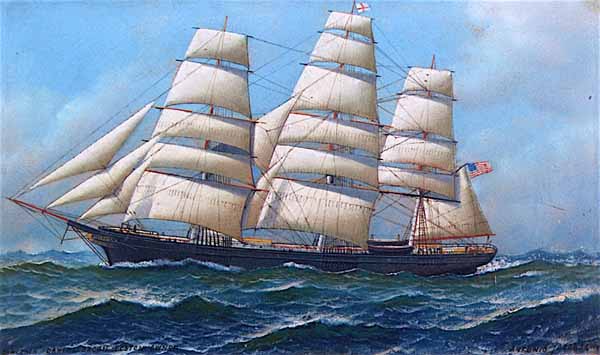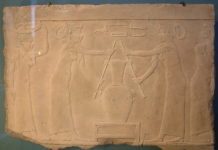For a start, the salt sea spray had a knife-edge sting. The wind could be savage and the temper of the open sea was an everyday threat to survival.
Dangers and Discomforts
When all three combined, as they often did, they set the seamen yawing aloft on foot ropes while theclippers convulsed beneath them as they struggled on their perilous perch to gather in yard upon hard of saturated canvas.
Of all the sailing vessels in which sailors have directly challenged the moods of Earth’s oceans, the 19th century clipper ships were probably the most beautiful, but also the most dangerous.
As those who sailed them often remarked, clippers were slave drivers, requiring the muscle power of two men to control the wheel and the rest of the crew, including at times the cook and the cabin boy, to work the sails.
The working week on board a clipper ship lasted seven days, twelve hours a day and seamen off watch were always likely to be called back on deck to deal with some sudden emergency.
Many Kinds of Emergency
Emergencies were frequent, since clipper ships were notorious for having contrary minds of their own. If allowed to have their head, some went perversely astern, others refused to tack from side to side, or they might protest at hard driving by burying their bows deep in the waves or squatting on their sterns.
Capricious clippers would refuse to respond to a following wind, yet run like a dream with the wind ahead. At times, their tantrums allowed huge waves to smash the wheel, swamp the poop, flood the fo’c’sle and sweep sailors off the boom, rails or deck and dump them in the sea.
Unsparing Captains, Brutish Crews
Not surprisingly, ships of this temperamental nature required strong-minded captains as well as strong-bodied crews. Other captains were even more thuggish than the rabble of roughnecks who composed many clipper crews.
These were the captains who ruled by the fist, the boot and the “cat”, and more than one of them always went on deck with a loaded pistol in his belt. More than one, confronted with trouble, or signs of trouble, used it.
All this was, of course, inevitable when thoroughbred ships like clippers were driven to their limits under a massive press of sail for weeks without pause. For despite their romantic image, clippers were built for the hardest-headed of purposes: to earn a profit.
For the Sake of Profit
Every scintilla of speed had to be squeezed out of them to make sure they justified their name. Clippers acquired their name for their ability to “clip” time off previous records, or travel “at a good clip” and the rewards for doing so were both rich and varied.
In the second half of the 19th century, mass migrations to America were taking place, with thousands leaving Europe to cross the Atlantic in hopes of a better life.
An important influence in this mass movement was the discovery of gold at Sutter’s Mill in California in 1847. This roused in the minds of millions irresistible dreams of quick riches and the same dreams and same frantic rush overseas accompanied another gold find, in Australia only a few years later, in 1851.
Australia also lured merchants, with its highly profitable wool trade. More profit beckoned from the China tea traffic, especially after the British East India Company lost its monopoly of the trade in 1833 and Britain opened her ports to foreign competition in 1849.
Building the Clippers for Speed
“Getting rich quick” therefore became synonymous with “getting there quick”. At the same time, ship designers slimmed down clipper hulls to a length five or six times the size of their beams, sharpened the sterns and bows and hung vast masts that could be as high as 150 feet or more, with a mass of heavy square rigging.
For all their outward elegance, clippers were stout vessels, built in Britain out of irion-framed hard woods such as teak or mahogany. These woods were highly impervious to water, and were consequently more likely to be leak-proof or “tight as a bottle” as sailors’ jargon had it.
Rigging was made of hemp or cotton rope and sails of cotton, or the thinner, but more flexible and easier to manage flax. Taken together, a clipper’s sails could comprise nearly an acre of canvas and sails for the famous Cutty Sark needed four miles of material two feet wide.
Please see also: In the Last Days of Sail: From Clippers to Steamships
Sources:
- Low, Charles Porter: Some Recollections by Captain Charles P. Low, Commanding the Clipper Ships “Houqua,” “Jacob Bell,” “Samuel Russell,” and “N.B. Palmer,” in the China Trade, 1847-1873 [1905] (Ithaca, New York: Cornell University Library, 2010 by Charles Porter Low, , 2010) ISBN-10: 1112600744/ISBN-13: 978-1112600746
- Clark, Arthur H.: The clipper ship era : an epitome of famous American and British clipper ships, their owners, builde by Arthur H. Clark (Charleston, South Carolina: BiblioBazaar, 2009) ISBN-10: 1117091449/ISBN-13: 978-1117091440








